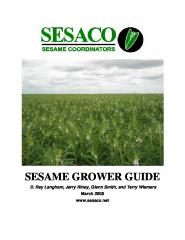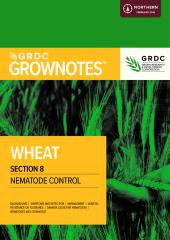Vigna radiata, or commonly known as Mung Bean, is an erect or semi-erect annual legume about 130 cm in height with a well-developed taproot. It is also known as moong bean, green gram, or mung. It is mainly cultivated as food crop in India, China, Korea, and Southeast Asia. The leaves are dark green and have three leaflets each. Flowers are pale yellow and small occurring in clusters of 10-20. The pods are black and straight. There are two main cultivars of V. radiata - golden gram, which has yellow seeds and the pods often shatter at maturity, and green gram, which has green seeds and the pods ripen more uniformly and are less likely to shatter. V. radiata has a symbiotic relationship with certain soil bacteria that form nodules on the roots and fix atmospheric nitrogen. Mature seeds are cooked or sprouted and used as an ingredient in a wide range of dishes. Young seedpods and leaves can also be cooked. In traditional medicine, the seeds are used in the treatment of paralysis, rheumatism, coughs, fevers, and liver ailments. Aside from the above-mentioned food and medicinal uses, the plant is also planted as a green manure or cover crop. Seed flour is rich in saponin contents and used as a substitute for soap. Plants are grown from seeds.
Vigna radiata is a ANNUAL growing to 0.8 m by 0.2 m at a fast rate.
It is hardy to zone 10. The flowers are pollinated by Insects. The plant is self-fertile.
It can fix Nitrogen.
Suitable for: light , medium and heavy soils and prefers well-drained soil. Suitable pH: acid, neutral and basic soils and can grow in very acid, very alkaline and saline soils.
It can grow in semi-shade or no shade. It prefers dry or moist soil.
A plant of the drier tropics, where it is found at elevations up to 2,000 metres. It grows best in areas where annual daytime temperatures are within the range 21 - 36°c, but can tolerate 8 - 40°c. The plant does not tolerate frost. It prefers a mean annual rainfall in the range 650 - 900mm, but tolerates 500 - 1,250mm. Plants do well when treated as a dry season crop. Seed set can be adversely affected by rainfall during the flowering period. Prefers a sunny position, tolerating light shade. Grows best in a well-drained soil rich in organic matter, succeeding in sandy to clayey soils. Some cultivars are tolerant of moderately saline and alkaline conditions. Prefers a pH in the range 5.5 - 6.2, tolerating 4.3 - 8.3. Established plants are moderately drought resistant. Young pods can be harvested in about 2 months from sowing the seed. A yield of dried seeds can be obtained within 50 - 120 days. Yields of 400 - 700 kilos of dried seed per hectare can be obtained. There are many named varieties. Two main sets of cultivars have been identified:- Golden gram has yellow seeds, the pods often shatter at maturity. Green gram has dark or light green seeds, the pods ripen more uniformly and are less likely to shatter. Cultivars can be short-day, long-day or daylength-neutral. The plant has deeply penetrating, vigorous roots. This species has a symbiotic relationship with certain soil bacteria, these bacteria form nodules on the roots and fix atmospheric nitrogen. Some of this nitrogen is utilized by the growing plant but some can also be used by other plants growing nearby. When removing plant remains at the end of the growing season, it is best to only remove the aerial parts of the plant, leaving the roots in the ground to decay and release their nitrogen. Spacing: 12-15 in. .
HabitatsNot known in a truly wild situation. Naturalized in open wastelandsHabitatsRoadsides
Habitatsthicket margins
Habitatsat elevations up to 500 metres in southern China.
Resources
8. Production and postharvest activities for sesame

SESAME GROWER GUIDE
D. Ray Langham, Jerry Riney, Glenn Smith, and Terry WiemersMarch 2008
http://baylor.agrilife.org/files/2011/05/sesamegrowerguide2008.pdf8. Production and postharvest activities for sesame
www.sesaco.net8. Production and postharvest activities for sesame
SESAME GROWER GUIDE
Baylor.agrilife.orghttp://baylor.agrilife.org/files/2011/05/sesamegrowerguide2008.pdf
D. Ray Langham, Jerry Riney, Glenn Smith, and Terry Wiemers
March 2008www.sesaco.net8. Production and postharvest activities for sesame
SESAME GROWER GUIDE
Baylor.agrilife.orghttp://baylor.agrilife.org/files/2011/05/sesamegrowerguide2008.pdf
D. Ray Langham, Jerry Riney, Glenn Smith, and Terry Wiemers
March 2008www.sesaco.net8151

Growing Seed Sprouts at Home
https://anrcatalog.ucanr.edu/pdf/8151.pdf8151
TREVOR V. SUSLOW, Department of Vegetable Crops, UC Davis; and
LINDA J. HARRIS, Department of Food Science and Technology, UC Davis.8151
Growing Seed Sprouts at Home
University of California, Agriculture and natural resources
TREVOR V. SUSLOW, Department of Vegetable Crops, UC Davis; and
LINDA J. HARRIS, Department of Food Science and Technology, UC Davis.GrowNote Wheat North 08 Nematodes

BACKGROUND | SYMPTOMS AND DETECTION | MANAGEMENT | VARIETAL
RESISTANCE OR TOLERANCE | DAMAGE CAUSED BY NEMATODES |
NEMATODES AND CROWN ROTNORTHERN
https://grdc.com.au/__data/assets/pdf_file/0030/370677/GrowNote-Wheat-North-08-…GrowNote Wheat North 08 Nematodes
Major pests
- Acherontia styx
Agrius convolvuli
Alfalfa mosaic virus
Amrasca
Amrasca biguttula biguttula
Amsacta moorei
Aphis craccivora
Blackeye cowpea mosaic virus
Boeremia exigua var. exigua
Borreria latifolia
Broad bean wilt virus
Cadophora gregata
Callosobruchus
Callosobruchus analis
Callosobruchus chinensis
Callosobruchus maculatus
Callosobruchus phaseoli
Chalara elegans
Choanephora cucurbitarum
Colletotrichum dematium
Colletotrichum truncatum
Commelina benghalensis
Cowpea severe mosaic virus
Cucumber mosaic virus
Curtobacterium flaccumfaciens pv. flaccumfaciens
Erysiphe diffusa
Euphorbia hirta
Gonocephalum
Heterodera cajani
Lampides boeticus
Macrophomina phaseolina
Maruca amboinalis
Medythia suturalis
Megalurothrips distalis
Megalurothrips usitatus
Mungbean yellow mosaic virus
Nezara viridula
Ophiomyia phaseoli
Orgyia postica
Oxycetonia versicolor
Phyllophaga
Pratylenchus brachyurus
Rhizobium radiobacter
Rhizobium rhizogenes
Riptortus
Riptortus clavatus
Riptortus dentipes
Riptortus linearis
Rottboellia cochinchinensis
Scirtothrips dorsalis
Sclerotinia sclerotiorum
Spodoptera littoralis
Spodoptera litura
Stegobium paniceum
Thanatephorus cucumeris
Tomato spotted wilt virus
Urd bean leaf crinkle virus
Xanthium spinosum
Xanthomonas campestris pv. vignaeradiatae
Minor pests
- Acyrthosiphon pisum
Aphis gossypii
Aproaerema modicella
Aspergillus niger
Athelia rolfsii
Bean common mosaic necrosis virus
Bean common mosaic virus
Candidatus Phytoplasma australiense
Cleome rutidosperma
Cochliobolus lunatus
Cochliobolus sativus
Colletotrichum capsici
Colletotrichum lindemuthianum
Corcyra cephalonica
Cowpea aphid-borne mosaic virus
Cuscuta campestris
Cyrtozemia dispar
Dactyloctenium aegyptium
Etiella zinckenella
Globisporangium debaryanum
Glomerella cingulata
Haematonectria haematococca
Heterodera glycines
Hilda patruelis
Holotrichia serrata
Hoplolaimus indicus
Hyptis brevipes
Leveillula taurica
Melanagromyza obtusa
Melanagromyza sojae
Meloidogyne ethiopica
Meloidogyne incognita
Olpidium brassicae
Ophiomyia centrosematis
Peanut stripe virus
Phoma pinodella
Phytoplasma aurantifolia
Podosphaera xanthii
Pratylenchus penetrans
Pseudocercospora griseola
Pseudomonas savastanoi pv. phaseolicola
Rotylenchulus reniformis
Scutellonema bradys
Scutellonema clathricaudatum
Sitophilus oryzae
Thysanoplusia orichalcea
Tribolium castaneum
Trichoplusia ni
Uromyces appendiculatus
Verticillium dahliae
Xanthomonas axonopodis pv. phaseoli
